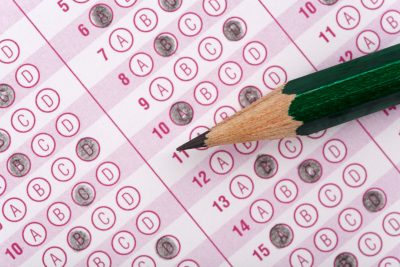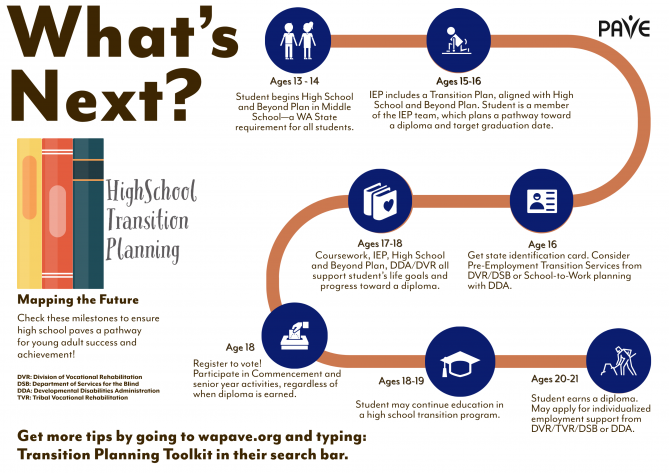The transition from high school to college can be a daunting experience for any teenager. Part of the transition process is preparing for and taking the entrance exams for college. If the student is receiving accommodations in school, they may qualify to receive special accommodations while taking a college entrance exam.
The ACT and College Board Services for Students with Disabilities (SSD) do not approve accommodations for all college entrance exams. Contact your school, college, or testing center for the CLEP and ACCUPLACER tests. Students with documented disabilities may request accommodations on PSAT-related assessments with the help of their school counselor.
Differences Between SAT and ACT Exams
Most universities accept both SAT and ACT and the length of both tests is approximately the same. ACT has more questions in that same period, so fast workers may prefer it. However, the best one for a student is the one they feel best about, so trying sections of both before choosing which one to study for is recommended by most test prep professionals. Both ACT and SAT have free practice sections available.
| SAT | ACT |
|---|---|
| Reading (65 min, 52 Questions) | Reading (35 min, 35 Questions) |
| Writing (35 min, 44 Questions) | English (45 min, 75 Questions) |
| Math (80 min, 58 Questions) | Math (60 min, 60 Questions) |
| Optional essay (50 min) | Science (35 min, 40 Questions) |
| Scored 400-1600 | Optional essay (30 min) |
| Scored 1-36 |
A student must have approval from the College Board SSD (for the SAT) or ACT to use accommodations on an exam. If a student uses extended test time or other accommodations without prior approval, their test results will be invalid.
The process of requesting accommodations varies depending on the exam. These are the steps to request accommodations on SAT and ACT college entrance exams:
Step 1: Document the need for accommodations.
The student must have a documented disability. Documentation can be a current psycho-educational evaluation or a report from a doctor. The type of documentation depends on the student’s circumstances. The disability must impact the student’s ability to participate in the college entrance exams. If the student is requesting a specific accommodation, documentation should demonstrate the difficulty the student has performing the related task. The College Board provides a disability documentation guideline and accommodation documentation guideline, as does the ACT. Doctor notes and Individualized Education Program (IEPs) or 504 plans may not be enough to validate a request for accommodations; you must provide supporting information, such as test scores.
While students typically only receive accommodations if they have a documented disability, some (very few) students who have a temporary disability or special healthcare need can also be eligible. The request is different in these circumstances for those who wish to take the SAT exam and students are often urged to reregister for a date after they have healed. If the student cannot postpone their test, the request form for temporary assistance must be completed by a school official, student (if over 18) or parent, doctor, and teacher. Then, the form must be faxed or mailed to the College Board for processing.
Step 2: Allow plenty of time for processing.
It takes time to apply for accommodations, including a processing period of up to seven weeks after all required documentation has been submitted to the College Board SSD or ACT. If they request additional documentation, or if a request is resubmitted, approval can take an additional seven weeks. Start as early as possible before the exam date to allow enough time for processing, responding to a request for more documentation, and additional processing time. If the student will take the exam in the fall, they should begin the process in the spring to allow sufficient time for processing.
Step 3: Identify appropriate accommodations.
If the student has a formal education plan, review the current plan, and note accommodations listed throughout, especially (but not only) those the student uses during assessments. Read through recent medical evaluations, prescriptions, and records to ensure all accommodations have been included in the formal education plan, if the student has one, or to locate appropriate accommodations recommended by medical professionals. You may recognize some of the Possible Accommodations for SAT and ACT Entrance Exams.
Some accommodations may only be provided during certain sections of the exam, depending on the specific accommodation requested. For example, a student with dyscalculia may receive extended time during the math section of the exam but not for any other subject.
Step 4: Submit the request for accommodations.
The easiest way to request SAT accommodations is to go through your student’s school. If you choose to go through the school, the school’s Services for Students with Disabilities (SSD) Coordinator (Special Education Coordinator, Guidance/School Counselors, etc.) can go online to review the SAT Suite Accommodations and Supports Verification Checklist and submit the application. Having the coordinator submit the application will help streamline the process. Homeschooled students or those who choose not to go through the school may request accommodations on the SAT exam by printing the Student Eligibility Form and submitting all documentation by fax or postal mail.
Requesting accommodations for the ACT exam requires working with a school official who is a part of the IEP team. The accommodations requested should be similar to the accommodations currently being received in school and must be approved by ACT before the test. All requests, including appeals, must be submitted by the late registration deadline for the preferred test date. Homeschooled students may request accommodations on the ACT exam by creating an ACT account online and submitting the required documents electronically.
Step 5: Register for the college exam.
Once the student is approved for SAT accommodations, they will receive a Service for Students with Disability (SSD) number that must be included when registering for the test. The school’s SSD Coordinator should ensure all the correct accommodations are in place when it is time to take the college exam. Approved accommodations will remain in effect for one year after graduation from high school.
Additional Information


